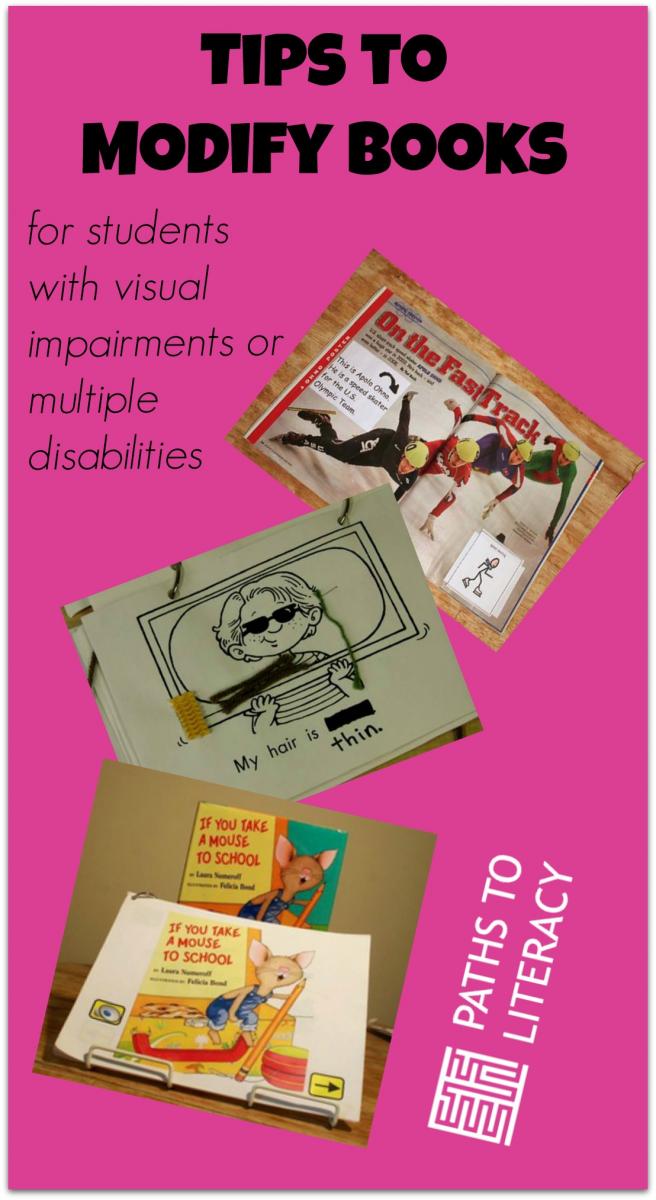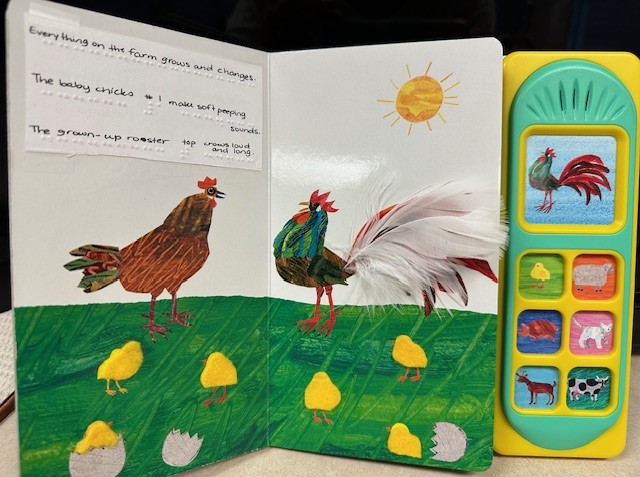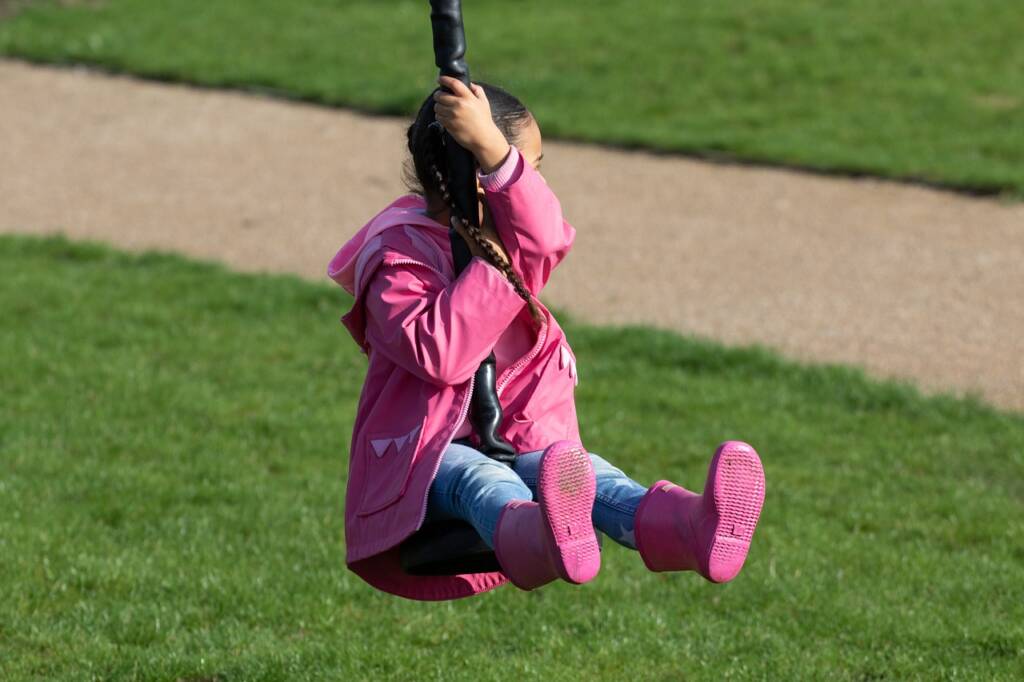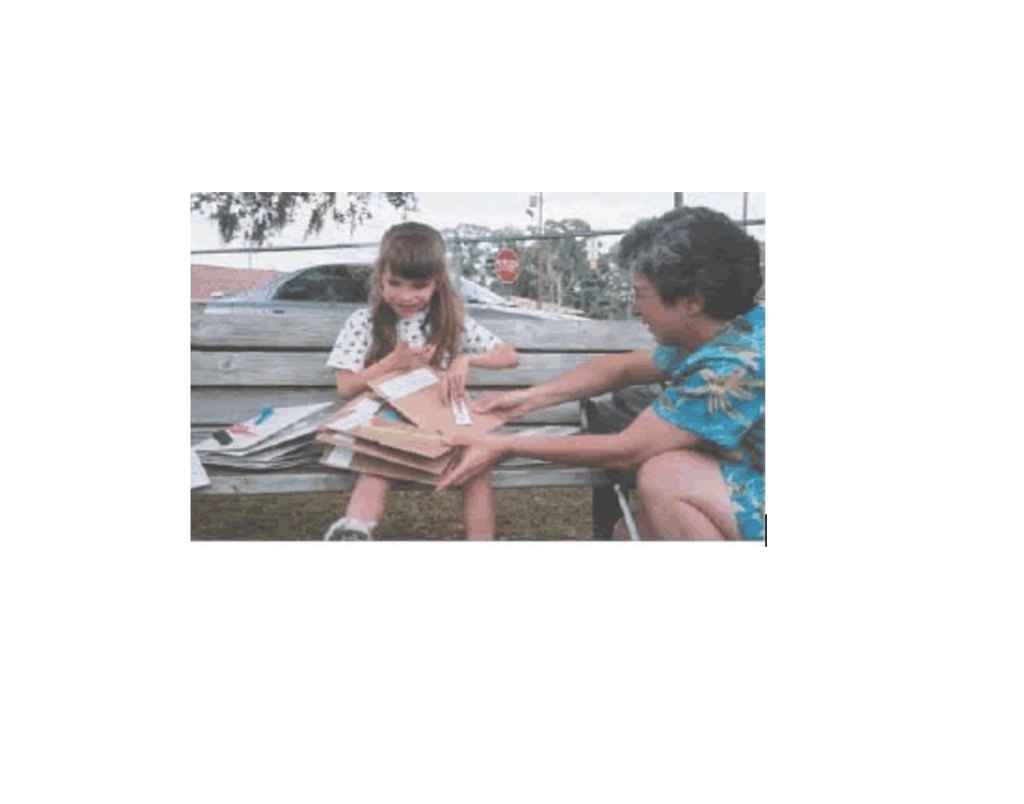By Deirdre Leech, Perkins School for the Blind
Because many commercially available books are not accessible to children with multiple disabilities, it is often necessary to adapt the existing book according to the needs of an individual student. Books may be purchased with braille text, but additional modifications may be necessary to make the book interesting and meaningful to a child with additional disabilities.
There are three basic ways in which to modify books:
Before You Begin
The first step before adapting a book is to determine the purpose of the book. Begin by asking yourself the following questions:
- What are the educational objectives for reading this book? (e.g. concepts, specific vocabulary words, braille or print recognition, book handling skills, social interaction)
- What are the child’s interests?
- What are the challenges the child faces in reading the book, including vision, hearing, cognition, and physical abilities?
- Where will the child read the book? (at home, at school, with friends)
- Will the child be reading this book alone?
- Are other students in the class reading the same book?
Modifications to the Text
- Make the text accessible by using braille or large print.
- Increase the contrast.
- Simplify the content.
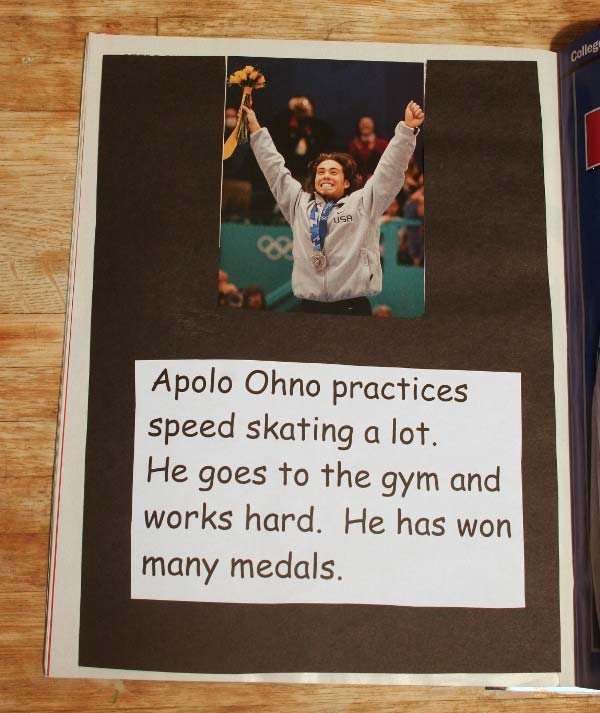
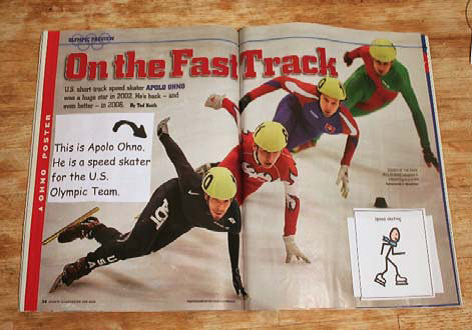
Simplifying the content and using symbols the student recognizes are helpful in adapting age-appropriate materials, such as magazines, to an individual’s reading level.
Modifications to the Picture
- Simplify the background. Take out busy or low contrast background and replace with a solid, high contrast background.
- Highlight the main idea of the picture.
- Highlight the picture with a preferred color so the child’s eye is drawn to the picture. (This may be especially helpful for students with CVI.)
- Provide tactile enhancement of the picture.
- Use an object in place of the picture
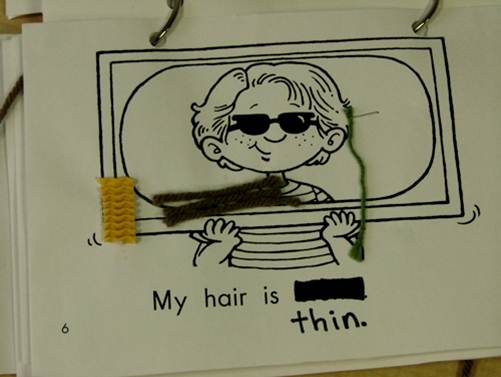
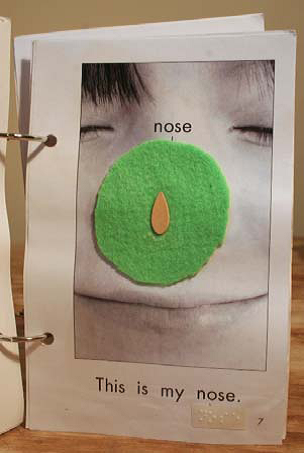
Modifications to the Book
Children with multiple disabilities may have difficulty holding the actual book or turning the pages, especially if they have a physical or motor impairment.
- Make the pages thicker using cardboard.
- Place tactile markers to help the child to locate specific parts of the book, as on the buttons pictured to the left.
- Add “page fluffers” These are simply small squares of foam or cardboard attached to the corner of apage to make them easier to flip without skipping pages.
- Mount the book on a book stand on a table.
- Re-bind the book so that the book stays open more easily.
- Laminate pages or place in protective sheets.
- Create an electronic version of the book.
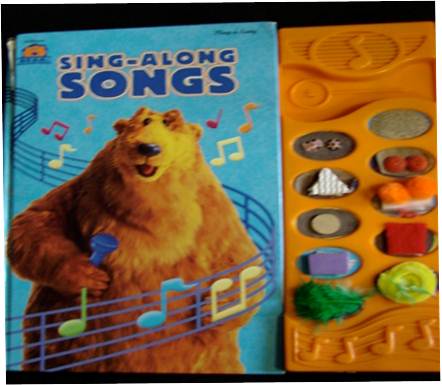
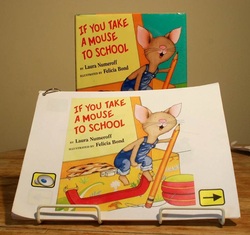
For more suggestions on modifying books, see also:
Every Child is a Potential Reader
By Patricia Weismer, MS. Ed. and Deirdre Leech, M.Ed., Perkins Deafblind Program, Perkins School for the Blind
Photos by: Megan Majors; New England Center Deafblind Project: In Touch Newsletter, Vol. 6, Issue 4, pp. 6-9 (February 2008)
Early Literacy and Students with Multiple Disabilities or Deafblindness webcast by Deirdre Leech, Perkins School for the Blind, with power point to accompany Perkins webcast.
Another helpful resource is the power point presentation Enhancing the Literacy Experience for Students who are Deafblind, also by Deirdre Leech, Perkins School for the Blind.
